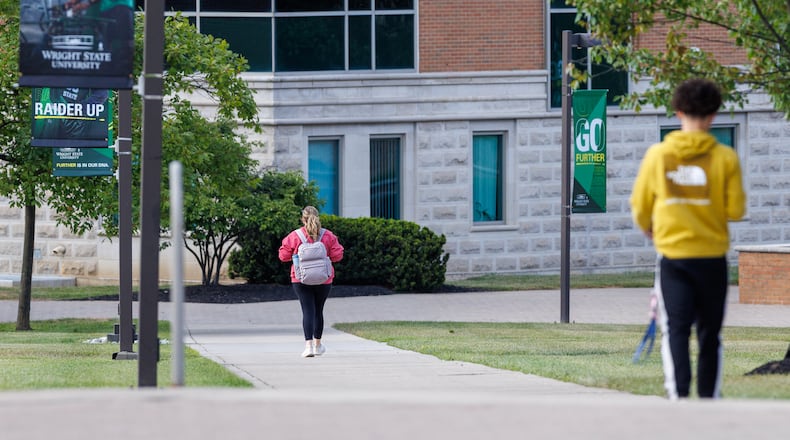“The purpose of the program is to increase the number of professionally trained behavioral health providers in the Greater Dayton area,” said Barb Marsh, director of Counseling and Wellness Services at Wright State. “We will achieve this goal by expanding on-site internships for students in our behavioral health degree programs.”
Marsh added the grant will increase access to behavioral health services in under served communities.
The partner agencies include the Greater Dayton Hospital Association, Dayton Children’s Hospital, Five Rivers Health Centers, Kettering Behavioral Health and Rocking Horse Community Health Center in Springfield.
The partners were chosen based on their ability to offer quality, diverse clinical training sites while also benefiting from more workers and shaping future providers, according to Wright State.
Wright State will place 12 master’s level interns with the partner organizations.
“These partnerships were designed to strengthen workforce development pipelines and ensure that students and trainees are prepared to meet the behavioral health needs of underserved populations,” Wright State professor Jennifer Hughes said.
Ohio meets just 30% of mental health care needs based on population, according to Nicole Kinzeler, an assistant director in the Boonshoft School of Medicine.
That makes Ohio one of the states with the highest provider shortages, Kinzeler said.
In 2022, fewer than 70% of mental health clients in Ohio received treatment within 14 days of their initial assessment, according to Wright State.
Younger people have been hit especially hard by the mental health crisis. In Ohio, a 2022-2023 report from OHYES! found 37% of kids reported feeling sad or hopeless every day for the past two weeks, an indicator of suicidal ideation. Pre-pandemic, that percentage was 26%.
One in five kids had at least one major depressive episode in the last year and more than half did not get treatment, according to the 2024 State of Mental Health in America. Of those who did get treatment, 65% said it helped.
Despite these statistics, Marsh says that more than half of Ohio youth with depression did not get care in the last year.
“That’s concerning for a number of reasons, but especially because high school students with depression are more than twice as likely to drop out of school than their peers, and this increases their likelihood of having encounters with law enforcement,” said Marsh.
This news outlet extensively reported the youth mental health crisis last year, which can be found at www.daytondailynews.com/mental-health-matters/.
Wright State is seeking financial resources to continue the program afterwards, according to school administrators.
About the Author

